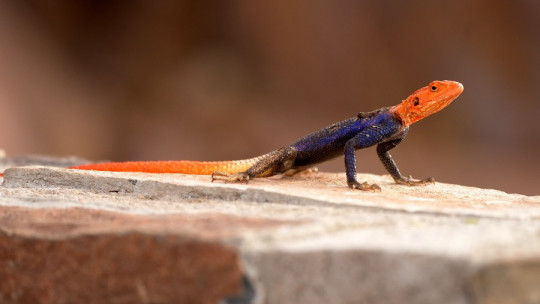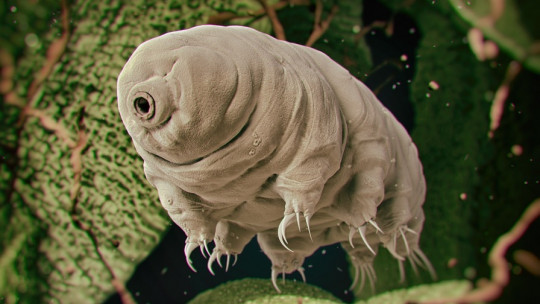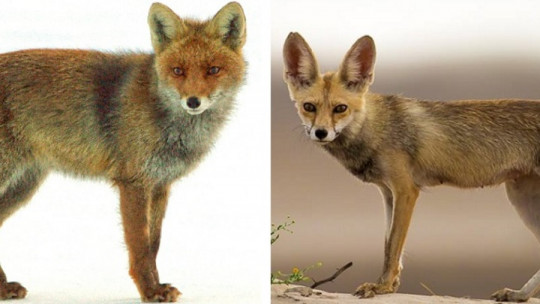
It is estimated that, until 2014, a total of 1,426,337 animals have been discovered on our planet. This value fluctuates almost daily, since it is also estimated that there are almost a total of 8 million species of living beings, of which more than ¾ are waiting to be discovered.
On the other side of the coin, the UN reports that around 150-200 species become extinct every 24 hours, a fact that offsets the 20,000 discovered on average annually. All these figures indicate an undeniable truth: the biological reality of our planet is fluctuating and, since we have been on it, the number and characteristics of the living beings that accompany us have changed drastically.
All this genetic and behavioral variability on the planet cannot be explained without concepts such as natural selection and genetic drift, facts that promote the presence or disappearance of species over time, as well as changes in their adaptive mechanisms. Today we are going to explain to you what it is sympatric speciation, the phenomenon that is presumably the most important driver in terms of the appearance of new species
How do new species appear?
From a biological point of view, A species is defined as a group of individuals that are completely fertile among themselves, but isolated from interbreeding with other similar groups for its physiological properties. If we go to a slightly more evolutionary description, we can say that a species is a single line of ancestor-descendant populations that maintains its identity with respect to other lines and preserves its own evolutionary tendencies and historical destiny.
In short: a species is made up of one or several populations of living beings that can reproduce among themselves, give rise to fertile offspring and that, in addition, have a clear phylogenetic lineage, sharing a common ancestor. Seems like a pretty watertight definition, right? How can new species appear then?
The mechanisms of speciation
The process by which a population of a certain species gives rise to another or other populations, reproductively isolated from the original, is known as speciation. After a certain time, they accumulate enough genetic differences to be unable to conceive fertile offspring with the original population
Ernst Mayr, a renowned evolutionary biologist of the 20th century, postulated that there are two major mechanisms of speciation:
So that we understand each other, In phyletic evolution the original species disappears to give rise to a new one, while in the variant of cladogenesis the original does not have to disappear, but rather “bifurcates” into new taxa by differentiation through different mechanisms.
What is sympatric speciation?
It is evolution by cladogenesis that interests us, since For this bifurcation to occur between two populations of a species, a barrier must first appear that prevents them from being in contact Allopatric speciation is the clearest representation of this process because, in it, a geographic barrier literally appears (a river, a mountain or a separation of tectonic plates, for example) that makes contact between both populations impossible.
Sympatric speciation is a little more difficult to understand, since in this case a tangible and observable barrier does not appear in the first instance that makes contact between individuals of the same species and population impossible. Different mechanisms are postulated by which these “non-physical” isolations can appear and, among them, are the following.
1. Sympatric speciation due to specialization: a clear example
We do not want to enter into genetic conglomerates but, in a very general way, we can say that this postulation is based on the fact that There may be alleles for a gene that encode more or less successful behaviors in the face of certain events For example, a population of insects may have an A1 allele that specializes them in consuming certain plants, while the mutation of the A2 allele turns out to be more effective in preying on other animals.
Since this genetic information is heritable from parents to children and, under certain conditions, it can be expected that A2 individuals will end up presenting sufficient behavioral differentiation with respect to A1 to give rise to different species after a long period of time. Both populations will end up exploiting different niches and accumulating very diverse adaptations, which is why a physical space that produces geographical isolation is not necessary to give rise to two different species.
2. Polyploidy and hybridization
These events are very common in the plant world, but they also occur in animals. In the case of polyploidy, we are talking about an increase in the number of chromosomes of a population at the cellular level For example, meiosis causes the formation of haploid cells (n), which are eggs and sperm, whose fusion will give rise to a diploid zygote (2n), like we human beings are in all cells except sexual cells.
If normal disjunction does not occur during meiosis, the sex cells will be diploid (2n) and, therefore, the zygote or individual born will be tetraploid (4n). As you can imagine, these descendant individuals will be reproductively isolated from their parents and the original population, but they will be able to reproduce among themselves.
As far as hybridization is concerned, in this case a new individual can be produced from parents of two different species Most hybrids in the animal kingdom are sterile but, especially in the case of plants, sometimes they can be reproductively viable with each other but cannot reproduce with either of the two parental species. Thus, from a theoretical framework, a new species would also emerge.
3. Speciation due to change in type of reproduction
The emergence of asexual lines from sexual lines in the same population automatically leads to evolutionary independence which is why this mechanism can be considered a type of instantaneous sympatric speciation.
There are cases of lizards and salamanders in which this type of speciation has been documented, since once the asexual route is chosen, in some cases the exchange of genetic information that reproduction entails with the original population is no longer necessary. Again, all of this is much more observable and common in plants than in the rest of the phyla.
4. Sympatric speciation by disruptive selection
In this case we are talking about something very similar to sympatric speciation due to specialization, but some meanings can be made regarding this term. Disruptive selection promotes that, in the same population, some individuals adapt to exploit a niche while others take a completely different path.
For example, let’s say that in a population of birds their prey begins to disappear in the environment for X or Y reason, since the ecosystems are not watertight. Given this need, and at least on paper, one would expect that one group of this population would distance itself from the other at a behavioral level to promote the permanence of the species and that the individuals of the same population would not “step on” their needs among themselves. . Thus, some birds could adapt to hunting at night and others during the day.
You can imagine everything that this entails: basically, individuals from the same population would hardly come into contact at any time: some would live during the day and others at night. In the end, the number of diverse adaptations and reproductive isolation is such in both populations that, in the same space, two species end up emerging without any physical barrier.
Summary
At the foundations of evolutionary biology lies the conception that allopatric speciation (remember: differentiation of two populations due to a geographical barrier) is the most important speciation mechanism, since it is basically the one that can be tangibly observed through the human eyes. With the advancement of science and the development of genetic testing, many 20th century biologists have been found to be quite wrong.
Today, sympatric speciation is considered to explain biological variation much better than allopatric speciation, since there are many mechanisms of reproductive isolation that do not pass through a tangible physical barrier. This is not to say that allopatric speciation has not done its work over the centuries, but rather that its importance has probably been overestimated.
We hope that sympatric speciation has become clear to you along these lines, since we are facing a phenomenon that is somewhat difficult to understand, since it happens through unobservable mechanisms. If we want you to have an idea of this whole hypothetical and terminological conglomerate, this is the following: sometimes a physical barrier is not necessary for two populations to differentiate into two different species. It’s that simple.








